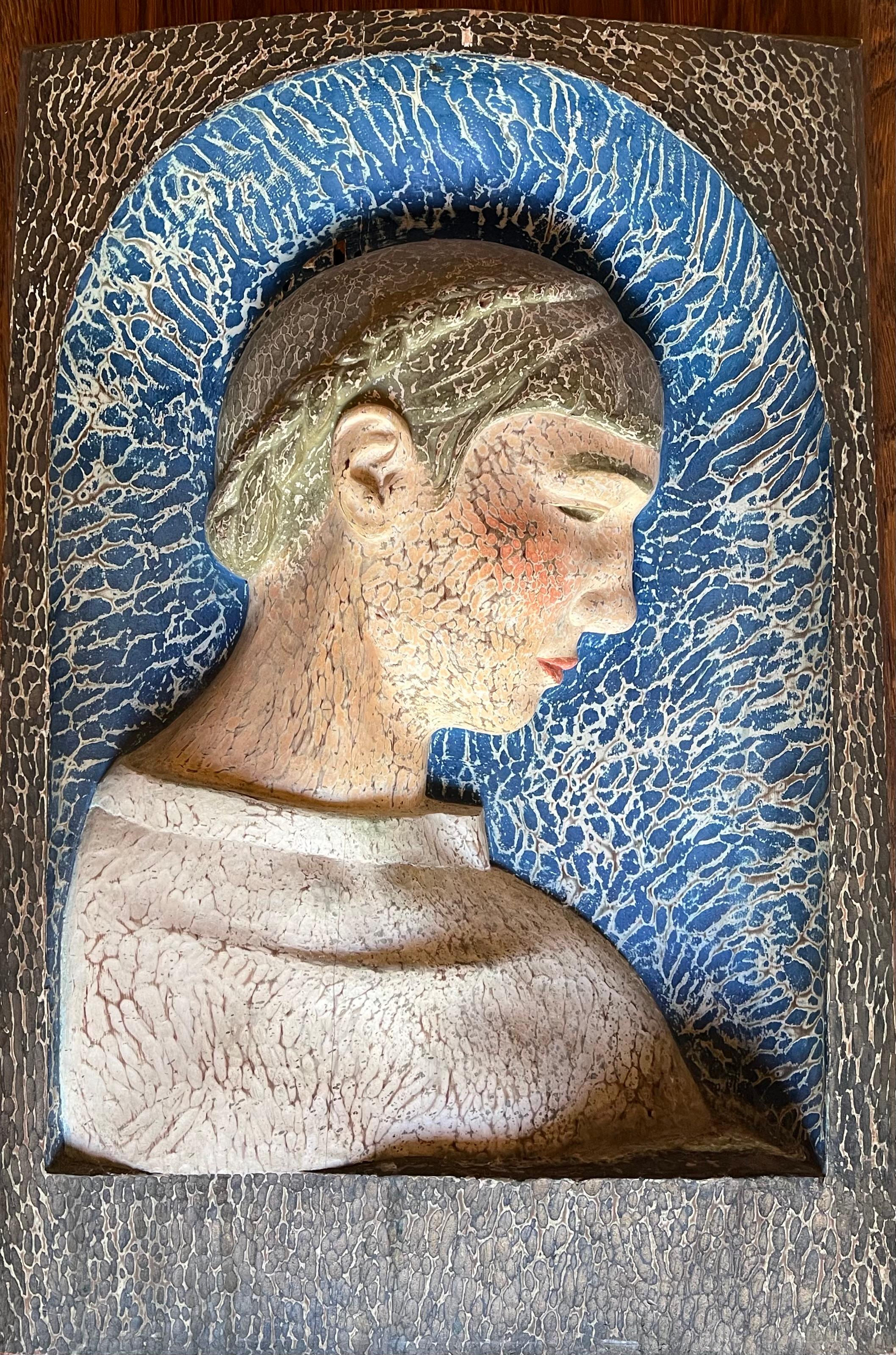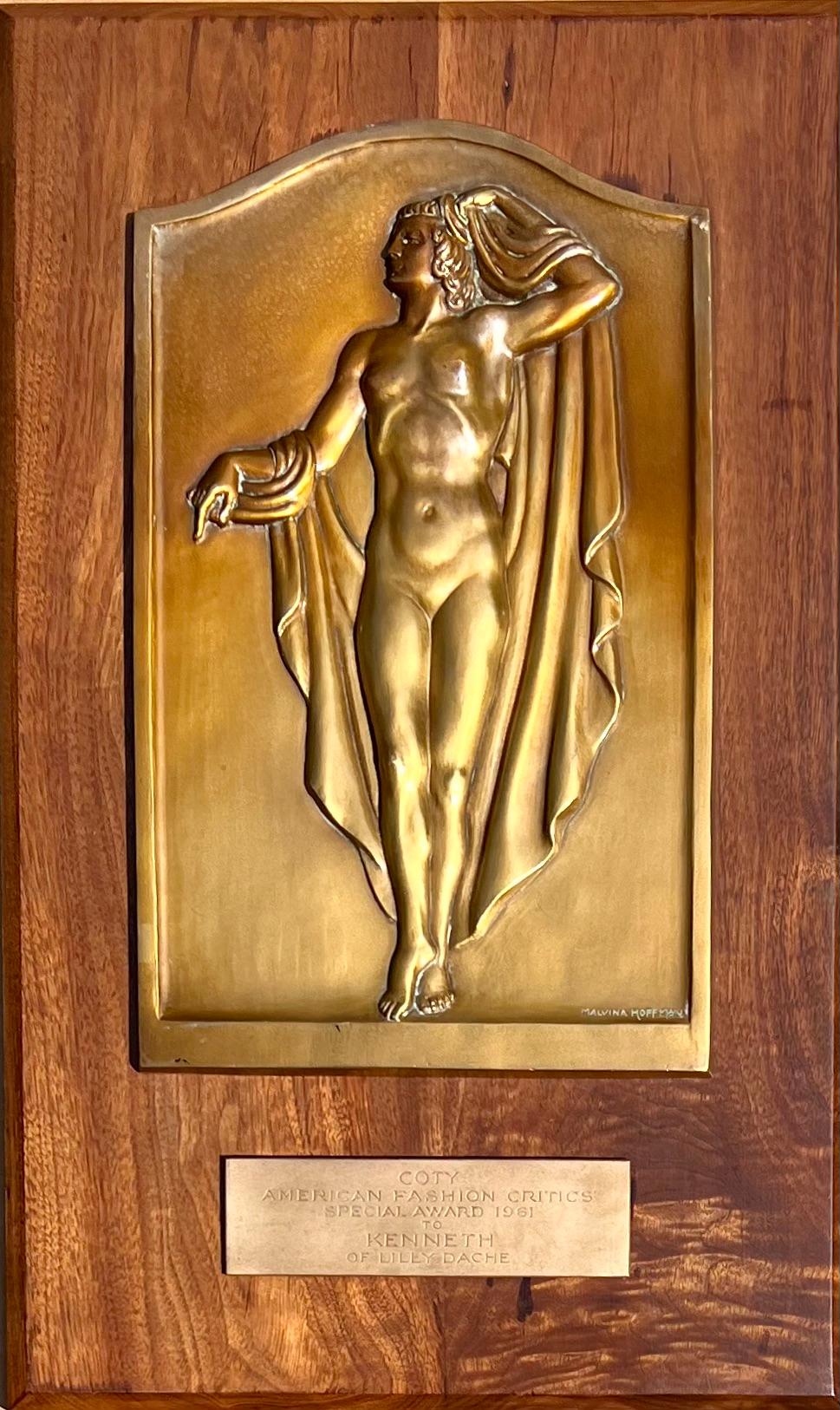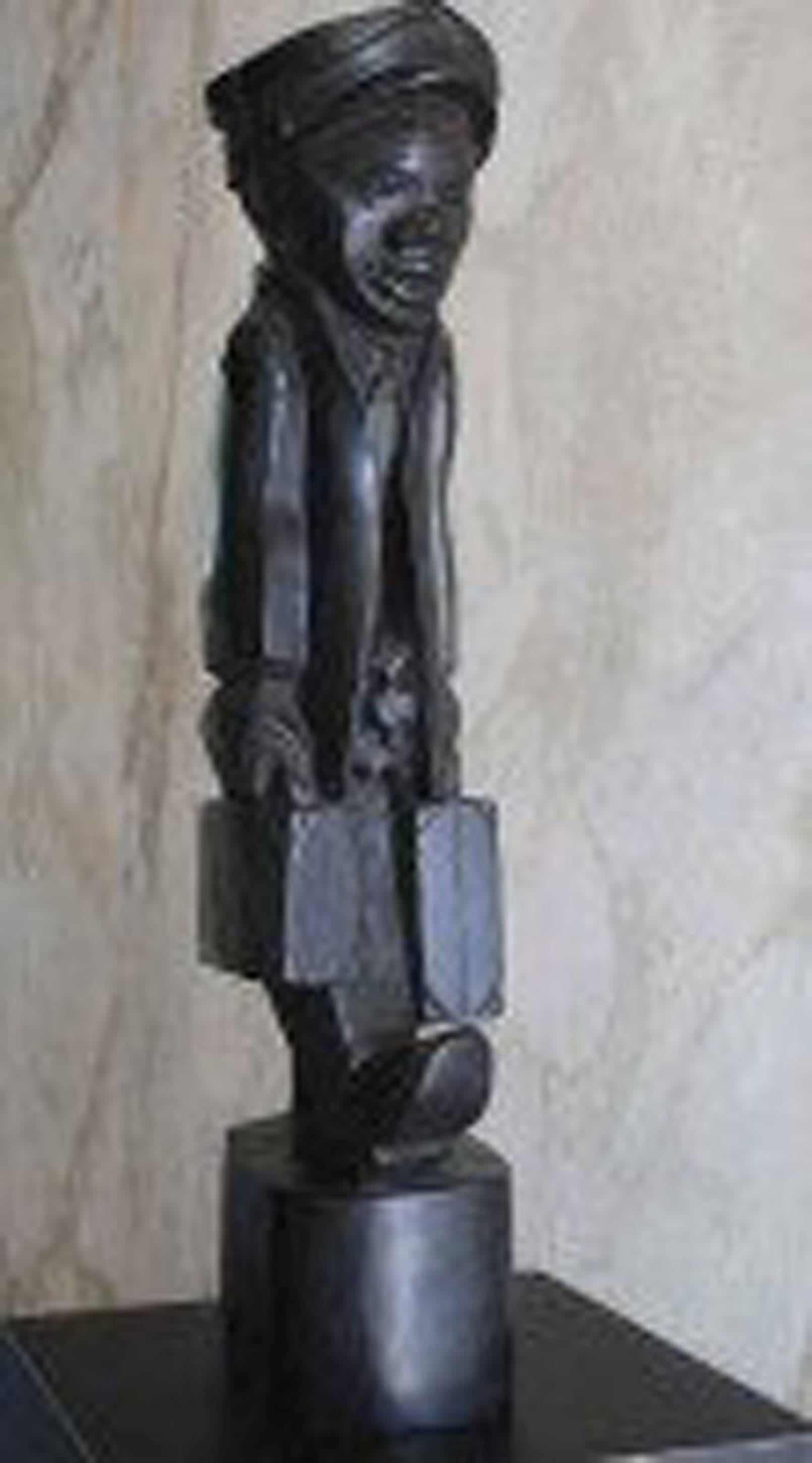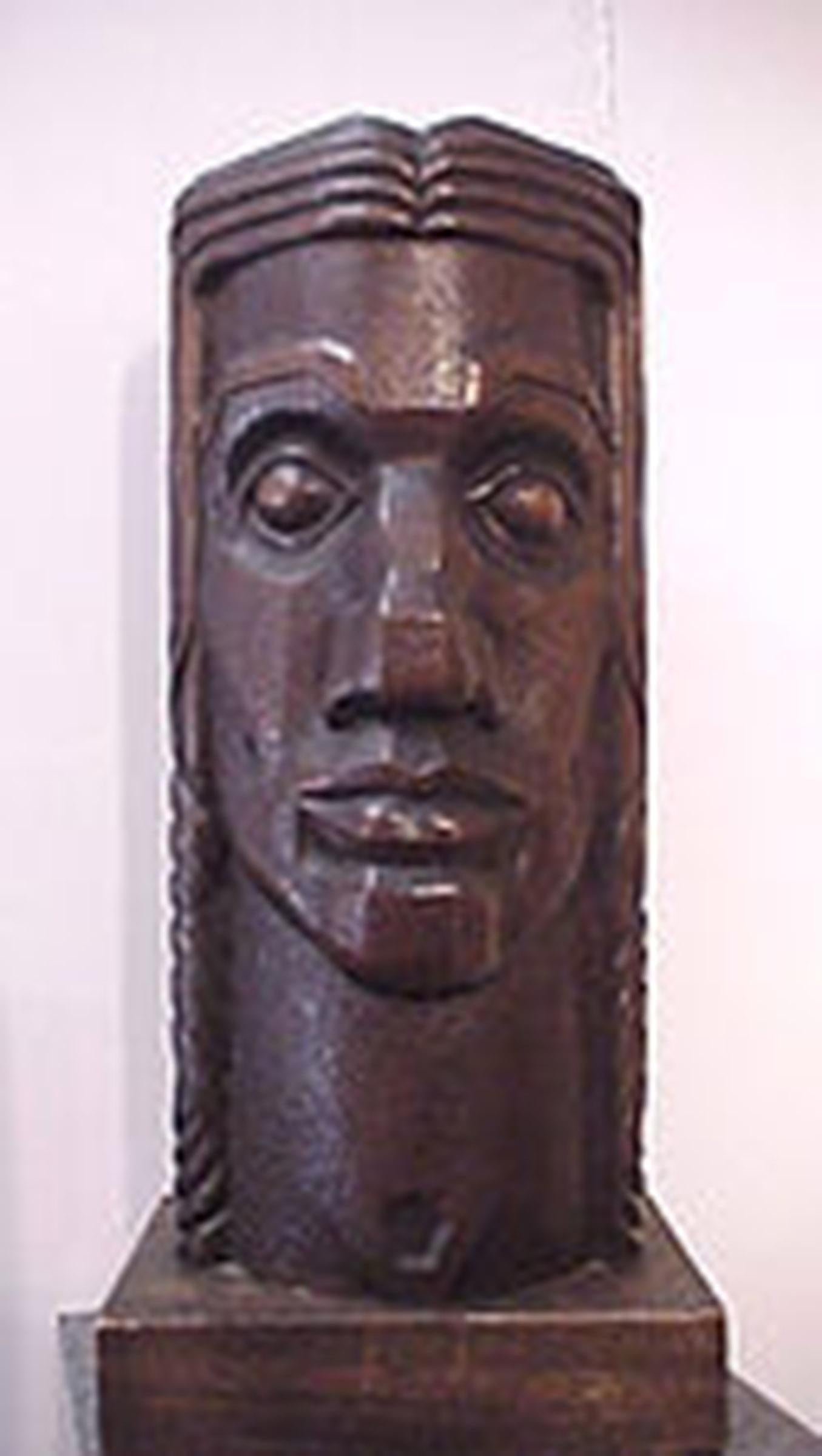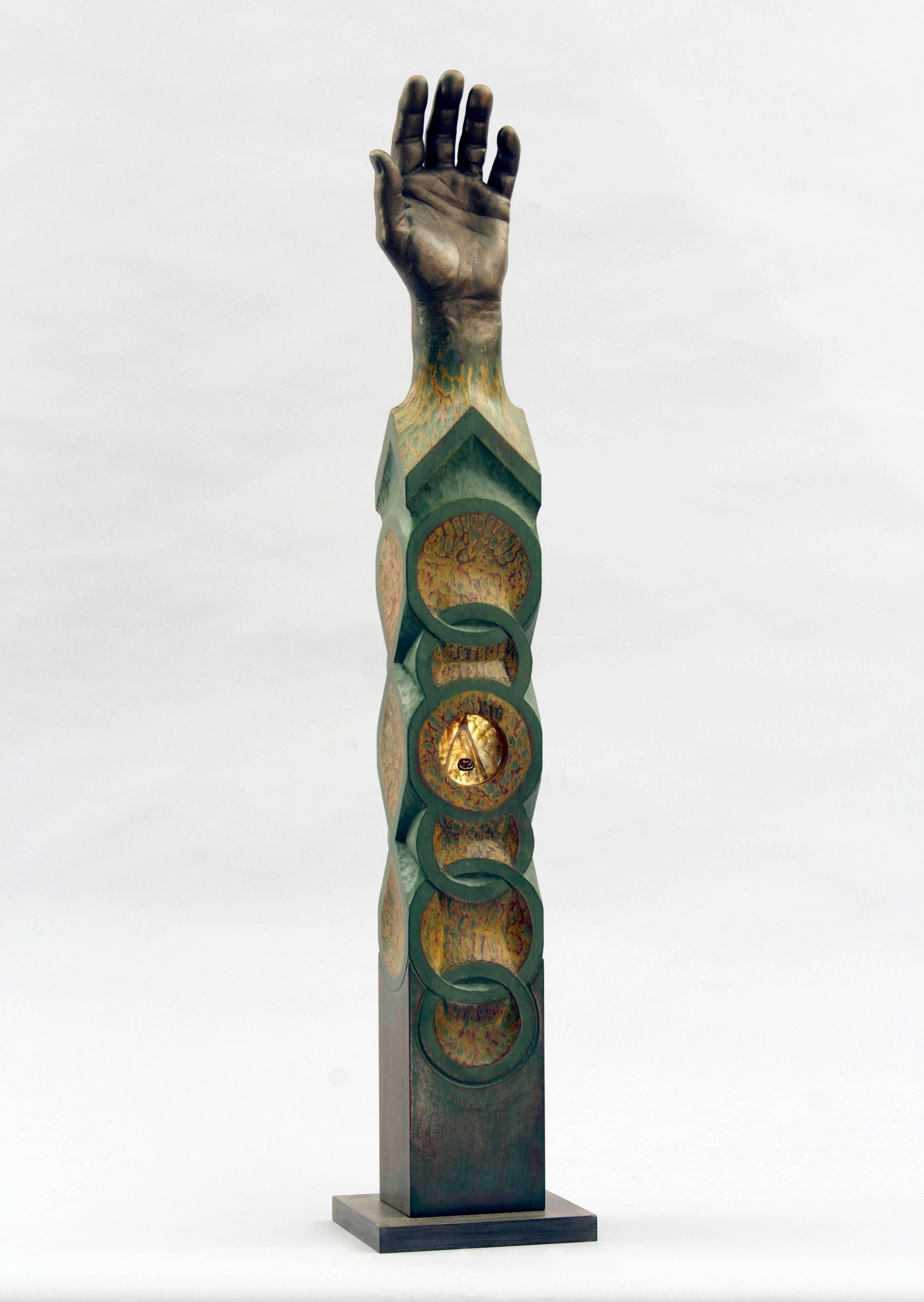Items Similar to STRIDENT MAN Carved Wood Sculpture Hollywood WPA Modernist Puppet Mid-Century
Want more images or videos?
Request additional images or videos from the seller
1 of 7
Louis BuninSTRIDENT MAN Carved Wood Sculpture Hollywood WPA Modernist Puppet Mid-Century1940s
1940s
About the Item
This 18 x 9 x 4 inch carved wood sculpture is unsigned and comes directly from the artist's family.
Louis 'Lou' Bunin (28 March 1904 – 17 February 1994) was an American puppeteer, artist, and pioneer of stop-motion animation in the latter half of the twentieth century. While working as a mural artist under Diego Rivera in Mexico City in 1926, Bunin created political puppet shows using marionettes including a production of Eugene O'Neill's The Hairy Ape. Photographer Tina Modotti took many pictures of Bunin and his puppets, including her renowned work, "The Hands of the Puppeteer."
On his return to the United States, Bunin created animated three-dimensional puppets to appear in the 1939 New York World's Fair in New York City. His 1943 political stop-motion satire, Bury the Axis, is well known. Later Bunin landed a job with Metro-Goldwyn-Mayer where he created the stop-motion Prologue to the famed film, Ziegfeld Follies. He was subsequently fired as a casualty of McCarthyism.
Bunin went on to create a feature length stop-motion animation film adaptation of Alice in Wonderland in 1949, starring Carol Marsh as a live-action Alice. A lawsuit from Walt Disney prevented it from being widely released in the U.S., so that it would not compete with Disney's forthcoming 1951 animated version. Further, the film was kept out of Britain as his representation of the Queen of Hearts was seen as too close and too unkind to Queen Victoria. The film was recently restored with 12 additional minutes and shown at museums around the US, including the Museum of Modern Art in New York City.
- Creator:Louis Bunin (1904 - 1994)
- Creation Year:1940s
- Dimensions:Height: 18 in (45.72 cm)Width: 9 in (22.86 cm)Depth: 4 in (10.16 cm)
- Medium:
- Movement & Style:
- Period:
- Condition:
- Gallery Location:New York, NY
- Reference Number:1stDibs: LU115624838392
About the Seller
5.0
Platinum Seller
These expertly vetted sellers are 1stDibs' most experienced sellers and are rated highest by our customers.
Established in 2008
1stDibs seller since 2019
163 sales on 1stDibs
Typical response time: <1 hour
- ShippingRetrieving quote...Ships From: Pawling, NY
- Return PolicyA return for this item may be initiated within 3 days of delivery.
More From This SellerView All
- 1961 Coty Award Plaque Kenneth Hairdresser Jacqueline Onassis Bronze FashionLocated in New York, NY1961 Coty Award Plaque Kenneth Hairdresser Jacqueline Onassis Bronze Fashion Bronze on wood. The wood plaque measures 12 3/4" by 20 3/4 inches. The bronze plaque itself is 13 3/4 x 8 3/4 inches and the the bronze inscription, which reads "COTY, American Fashion Critics Special Award 1961 to KENNETH of LILY DACHE...Category
1960s American Modern Figurative Sculptures
MaterialsBronze
- "Pioneer Family" WPA American Modernism Plaster Maquette Realism 20th CenturyBy William ZorachLocated in New York, NY"Pioneer Family," 23 1/2 x 16 1/4 x 10 3/4 inPlaster. c. 1927. Unsigned. Realism The Smithsonian has a cast of this sculpture in its collection. Pictured on the cover of “The Sculpt...Category
1920s American Modern Figurative Sculptures
MaterialsPlaster
- 2 Sculptures: "The Power" & "The Glory" WPA Depression WWII era mid 20th centuryBy Agnes YarnallLocated in New York, NY2 Sculptures: "The Power" & "The Glory" WPA Depression WWII era mid 20th century by Agnes Yarnall circa 1940s. Sculptor, painter, poet and artistic historian, Agnes Yarnall has, since the age of six been breathing life into her art. Renowned as a sculptor, whose commissioned portrayals of contemporary celebrities are prized. She has sculpted Judith Anderson, Edna St. Vincent Millay, Carl Sandburg...Category
1940s American Modern Figurative Sculptures
MaterialsPlaster
- Barge Toiler -Mid 20th Century Modern WPA Labor Plaster Depression-Era SculptureBy Max KalishLocated in New York, NY"Barge Toiler" by Max Kalish is a Mid 20th Century modern Depression-Era sculpture from his Labor series. The WPA era work is made of plaster. Max Kalish (1891 – 1945) Barge Toiler...Category
1930s American Modern Figurative Sculptures
MaterialsPlaster
- Industrial Machine Age American Scene WPA Mid 20th Century 1939 SF World's FairLocated in New York, NYIndustrial Machine Age American Scene WPA Mid 20th Century 1939 SF World's Fair HAIG PATIGIAN (American/Armenian, 1876-1950) Aeronautics Pediments Two Plaster Casts, c. 1930s each 13.25 x 14.75 x 6 inches It's possible these moquettes were created for the 1939 World's Fair, the Golden Gate International Exhibition in San Francisco. Provenance: Private Collection of Lois M. Wright, Author of "A Catalogue of the Life Works of Haig Patigian, San Francisco Sculptor, 1876-1950),” 1967 Loan to Oakland Museum of California (Oakland, CA) BIO Haig Patigian is noted for his classical works, which are especially numerous in public venues in San Francisco, California. Patigian was born in Van, Armenia, which at that time was under Turkish rule. Haig was the son of Avedis and Marine Patigian, both teachers in the American Mission School there. He and his older brother showed an aptitude for art early on and were encouraged by their parents. Their father himself had taken up the new hobby of photography. The 1880s were harsh times, however, for many Armenians under an oppressive rule by the Turkish government. Many people were fleeing to the safety of the United States. Suspicious Turkish authorities accused his father of photographing city structures for the Russian government, and in 1888 he fled for his life to America. Haigs father made his way to Fresno, California, and began life anew as a ranch hand. Within two years he sent for his wife, as well as Haig, his three sisters and brother, and in 1891 the Patigians made the journey from Armenia. Haigs father, an industrious man, worked on various farms, and eventually bought his own ranch and vineyard. It was among fertile farmland of Fresno that Haig grew up. Young Haigs education consisted of teachings by his parents and by intermittent attendance in public schools. Although he had dreams of becoming an artist, he did not have the opportunity for formal study of art, and began working long days in the vineyards around Fresno. At age seventeen, Haig made a step towards his dreams and apprenticed himself to learn the trade of sign painting. In his spare time he nurtured his interest in art by painting nature and life scenes with watercolors and oil paints. When his sign-painting mentor left Fresno, Haig opened his own shop and made a name for himself in the town. San Francisco, in the meantime, had been attracting artists since the Gold Rush and had become a thriving art center. Within a few years, Haig had put aside several hundred dollars to move to San Francisco, joining his brother who was already working there as an illustrator. In 1899, when he was twenty-three, Haig had saved enough money to enroll at the Mark Hopkins Art Institute in San Francisco. Like many aspiring artists of his time, Patigian supported himself by working as a staff artist in the art department of a local newspaper, and in the winter of 1900, nearing his 24th birthday, Haig began work for the San Francisco Bulletin, producing cartoons, black and white illustrations, as well as watercolors. In 1902 tragedy struck Haig and his family. His 29-year-old brother died of pneumonia, and then his frail mother died a short time later. Five months more saw his youngest sister, just out of high school, die too. Saddened and depressed, Haig moved out of the studio he had shared with his brother, and into a dilapidated studio in a poor section of town. During this time of sadness, Haig fed a growing interest in sculpture. In 1904 Haig created what he later called his "first finished piece in sculpture". The work, called "The Unquiet Soul", depicted a man thrown back against a rock while waves lash at his feet. The body was tense and twisted, with one hand, in Haig's own words, "searchingly leaning and clutching the rock, while the other masks his troubled head". The Press Club of San Francisco, which Haig had joined in 1901, put "The Unquiet Soul" on exhibition and local headlines proclaimed "Local Newspaper Artist Embraces Sculptor's Art", and "First Work Predicts Brilliant Future". With the support of friends and community acclaim, the young illustrator left his newspaper job and became a professional sculptor. The path of his new career was not easy though. Haig had never made much money working for the newspaper and his father needed help with growing debt from funeral expenses and business problems. From time to time Haig sold some artwork, but also occasionally borrowed from friends to pay the rent. He was the classic 'starving artist'. In the spring of 1905 a white-bearded 81-year-old stranger knocked on Haig's door. It was George Zehndner, from Arcata, California. Zehndner had been born in Bavaria, Germany in 1824, the son of a farmer. In 1849 he had come to America looking for prosperity, settling in Indiana, where he worked on a farm and learned English. He found his way to the West Coast in 1852. Penniless, he worked in various jobs from San Francisco to Sacramento, then found some luck working in the gold fields of Weaverville in Trinity County, and eventually moving to a farm on 188 acres near Arcata. In his 77th year in May of 1901, Zahndner had taken a trip to San Jose, where he stood in a crowd to see a man he thought much of, President William McKinley. McKinley was popular as 'the first modern president' partially because he realized going out to meet the common person increased his support. In September of that year, however, an anarchist assassinated the president while he stood in a receiving line at the Pan-American Exhibition in Buffalo, New York. Soon after, the city of San Jose erected a statue of the slain president in St. James Park. Zehndner took a second trip to San Jose where he visited the McKinley monument. Touched, Zehndner decided that, no matter the cost, his town of Arcata too would memorialize McKinley. George Zehndner had read about Haig in a newspaper article and asked if Patigian would create a heroic statue of the late President McKinley for Arcata. When asked how much it would cost, Haig responded, despite his borderline poverty, with the fabulous sum of $15,000. Zehndner agreed. The President was to be portrayed standing, wearing an overcoat, with his feet planted squarely on the ground. In the finished statue, one hand is held out before him in a typical posture of speaking, with the other hand holding the speech as his side. The 9-foot statue...Category
1930s American Modern Figurative Sculptures
MaterialsPlaster
- 1, 000 piece Museum Quality Collection of Art & Objects from NYC 1939 Worlds FairBy Harry LaneLocated in New York, NY1,000 piece Museum Quality Collection of Art & Objects from NYC 1939 Worlds Fair Harry Lane (1891-1973) "1939 World’s Fair Construction," 30 x 40 inches, Oil on canvas, signed lower...Category
1930s American Modern Landscape Paintings
MaterialsPlaster, Photographic Paper, Canvas, Oil
You May Also Like
- Untitled (Hulda Goeller)Located in Los Angeles, CAThis sculpture is part of our exhibition Charles Goeller: A Wistful Loneliness. Carved and painted wood and gesso, 23 x 15 3/4 x 3 inches, Signed verso "Carved by Charles L. Goeller...Category
1930s American Modern Figurative Sculptures
MaterialsWood, Gesso
- David Hostetler Jazz Singer Carved Pale Wood Sculpture Female ContemporaryBy David HostetlerLocated in Nantucket, MAJazz Singer V is carved white oak from David Hostetler's Ohio property. It was inspired by his wife Susan, who would sing in Club Davd- his jazz club a...Category
Early 2000s American Modern Figurative Sculptures
MaterialsOak
- Phi Beta Red KappaBy Burton FreundLocated in West Hollywood, CAAmerican artist Burton Freund worked in Chicago in the 1930's and 1940’s for the FAP (Federal Arts Project) as an illustrator and sculptor. These original wood sculptures are time capsules of the 1930's and 1940's, hand carved out of solid wood including their bases. Walking the train platform in Chicago in 1938, the artist saw a "Red Cap" porter with a Phi Beta Kappa key hanging around his neck. When asked, the porter...Category
1930s American Modern Figurative Sculptures
MaterialsWood
- IsabellaLocated in West Hollywood, CAPresenting an original carved wood sculpture by American WPA artist Avis Zeidler Nemkoff. "Isabella", is a hand carved wood sculpture measuring 18.5 inches tall, exceptional original condition, originally acquired from the estate of the artist who resided in Northern California. This is a magnificent one of a kind hand carved wood sculpture, c.1938. Please contact the gallery for additional information •Avis Zeidler was born in Madison, Wisconsin, in 1908. •It is not known when Zeidler moved to California. However, in the 1930s she majored in art at the University of California. •Later, she enrolled at the California School of Fine Arts after receiving a scholarship for her studies there. She studied with Ray Boynton, Lucien Labaudt, Karl Eugen Neuhaus, and Ralph Stackpole...Category
1930s American Modern Figurative Sculptures
MaterialsWood
- Rel 17.1By Phillip ShoreLocated in Three Oaks, MIPhilip Shore uses his art to illustrate man's relationship to the environment and how the connection between nature and culture is becoming more fractured. Rel 17.1 consists of wood,...Category
2010s American Modern Mixed Media
MaterialsResin, Wood, Casein
- Texas Artist David Pryor Adickes John F Kennedy Bas Relief Painted SculptureLocated in Surfside, FLDavid Pryor Adickes American (b. 1927) John F. Kennedy bas-relief plaster relief sculpture in artists frame incised signature lower center. with gold stars...Category
20th Century American Modern Figurative Sculptures
MaterialsPlaster, Wood, Paint
Recently Viewed
View AllMore Ways To Browse
Wood Man
Vintage Wood Pictures
Mid Century Modern Figurative Sculpture
17 Century Sculpture
Modern British Sculpture
Wood Carved Man
Queen Sculpture
Modernist Wood Sculpture
Vintage 1939 New York Worlds Fair
1940S Vintage Fairs
Vintage Wood Heart
Mexican Carved Wood
Mexico Carved Wood
Heart Carved Wood
Modernist Fire
Modernist Carved Sculpture
Queen Of Hearts
Wpa Sculptures
